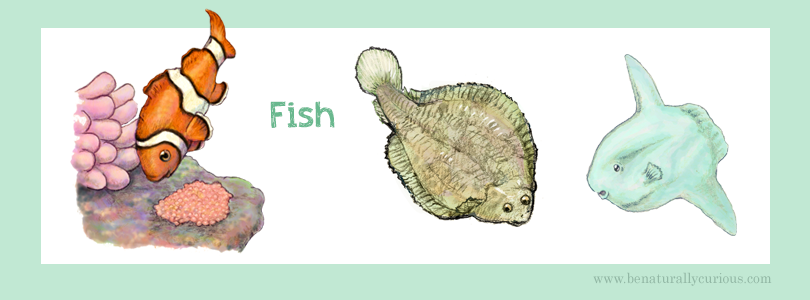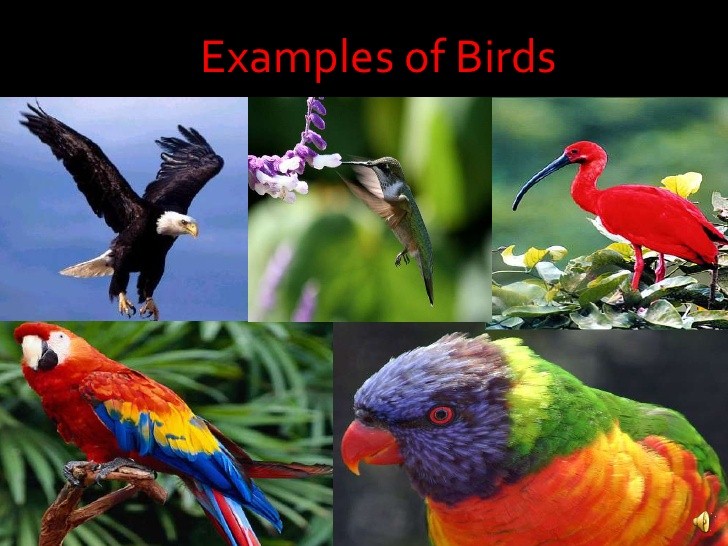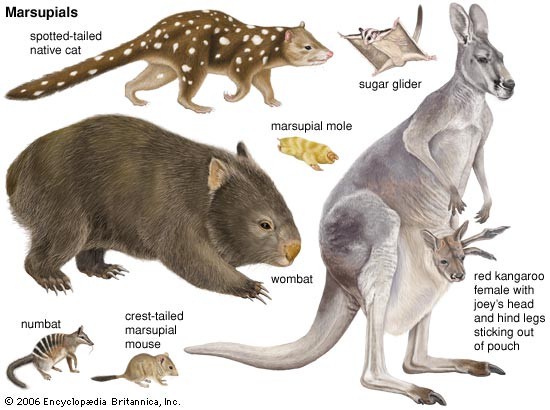Vertebrates
Kingdom – Vertebrates (Chordate Coelomate Deuterostomes)
Table of Content |
Definition of Vertebrates
Vertebrates are creatures that have a spine or spinal section, additionally called Vertebrae. The list of vertebrates includes fish, flying creatures. For Example: Birds, Amphibians, Mammals and Reptiles.
A concept map would be best for the explanation of vertebrate classification and can be seen here.
A. Subphylum Vertebrata (Characteristics of Vertebrates)
1. Around 45,000 surviving types of vertebrates are placed in subphylum Vertebrata.
2. Vertebrates have each of the four chordate attributes at some point amid their lives.
3. Embryonic notochord is supplanted by a vertebral section.
a. Vertebral section is singular vertebrae that encompass a dorsal empty nerve line.
b. Vertebral section is a piece of a flexible, solid endoskeleton and is proof of segmentation.
4. Skeleton of a vertebrate is a living tissue (either ligament or bone) that develops.
5. Endoskeleton and muscles together allow fast and effective development.
6. Transformations couldn't have collected new hereditary data needed for the development of different types of the same animal.
7. A skull is foremost part of principle axis of vertebrate endoskeleton; it encases the cerebrum.
8. High level of cephalization in vertebrates is joined by complex sense organs.
a. Eyes composed as outgrowths of the cerebrum.
b. Ears – For harmony, likewise sound-wave receivers.
9. They have an entire digestive system and an expansive coelom.
10. Circulatory framework is of closed type and pigments for respiration are contained inside veins.
11. Gills or Lungs give proficient exchange of gas.
12. Kidneys proficiently discharge nitrogenous waste and manage water.
13. Reproduction is generally sexual with opposite sexes.
14. Outline of the amnion permits reproduction ashore.
15. Placental warm blooded creatures permit improvement in the uterus.
B. Fishes
1. Fishes are aquatic vertebrates that breathe through gills and very often have fins and skin secured with scales.
2. Little, jawless, and fin-less ostracoderms are vertebrates that are extinct now (fossils).
a. They were channel feeders likewise ready to move water through their gills by strong muscular activity.
b. Albeit living jawless fish need security, wiped out jawless fish had extensive protective head shields.
C. Jawless Fishes
1. Jawless fishes are agnathans; 63 species have a place with superclass Agnatha.
2. Lampreys and hagfishes are today's jawless fishes; they do not have a hard skeleton.
3. They have smooth non-textured skin; have round and hollow bodies, and are almost a meter long.
4. Hagfishes are scroungers sustaining on delicate bodied spineless creatures and dead fishes.
5. Numerous lampreys are channel feeders; others are parasitic with a round solid mouth outfitted with teeth to append themselves to fish and suck supplements from the host's circulatory framework.
6. Marine parasitic lampreys moved into the Great Lakes and crushed the trout population in the 1950s.
D. Fishes with Jaws
1. Creatures past this point are super class gnathostomates, creatures with jaws and teeth
2. Placoderms are terminated jawed fishes.
a. They were protected with overwhelming plates and had solid jaws.
b. Like surviving fishes, they had pair of pectoral and pelvic fins.
c. Paired fins permit a fish to adjust and move well in water; this helps predation.
E. Cartilaginous Fishes
1. 850 types of skates, beams, and sharks are placed in class Chondrichthyes, the cartilaginous fishes.
2. They have a cartilaginous skeleton as opposed to bone.
3. Five to seven gill openings are on both sides of the pharynx; they do not have gill covers as hard fish.
4. Body is secured by epidermal placoid (tooth-like) scales; teeth of sharks are developed scales.
5. Three faculties identify: electric streams in water, weight (a sidelong line framework), and smell.
6. Biggest sharks are channel feeders, not predators; basking and whale sharks eat huge amounts of shellfish.
7. Most sharks are quick, vast ocean predators; an awesome white shark eats dolphins, ocean lions and seals.
8. Skates and Rays live on sea depths; pectoral fins are developed into wing-like fins; they swim gradually.
9. Stingrays carry a venomous spine.
10. Electric beams feast upon fish that have been paralyzed with electric stun of more than 300 volts.
11. Sawfish beams have a substantial foremost "saw" that they use to cut through schools of fish.
F. Bony Fishes
1. 20,000 types of hard fishes are in class Osteichthyes.
2. Hard fishes have a hard skeleton; most are beam finned with thin, hard beams supporting fins.
3. A couple are flap finned fishes.
4. Beam finned angles incorporate well known fishes.
a. They are quite diverse and best of vertebrates.
b. They shift from channel feeders to predaceous carnivores.
c. Their skin is secured by scales shaped of bone.
d. The gills don't open independently and rather are secured by an operculum.
e. Swim bladder is a gas-filled sac whose weight adjusts to direct buoyancy and profundity.
f. Salmon, eels and trout relocate amongst salt water and fresh water but conform kidney and gill function.
g. Sperm and eggs are generally shed into water.
h. For most, preparation and embryonic improvement happen outside the female's body.
5. Flap finned fishes incorporate six types of lungfishes and one types of coelacanth.
a. Fleshy fins that are upheld by focal bones.
b. Lungfishes live in ponds that dry up or stagnant water; found in Africa, Australia and South America.
c. Coelacanths live in profound seas; once thought to be terminated, more than 200 have been caught since 1938 close to the Comoros Islands, with latest findings close to Malaysia.
G. Amphibians
Amphibians
1. Creatures starting here on have four limbs and are Tetrapods.
2. Land creatures utilize limbs to bolster the body since air is less light than water.
4. Around 3,900 types of amphibians have a place with class Amphibia.
5. Differing qualities of Amphibians
a. Today's amphibians incorporate toads and frogs, lizards and newts, and caecilians.
b. Lizards and newts have a long body and tail, and two sets of legs
c. S-formed movement is like a fish.
d. Lizards and newts are meat eating, encouraging on bugs, snails, and so on.
e. These perform internal fertilization; males create a spermatophore that females get with the cloaca.
f. Frogs and amphibians are tailless like adults; the rear limbs are specific for hopping.
g. Frogs and amphibians have head and trunk melded; frogs live close to fresh water, toads live in moist spots far from water.
h. Caecilians are legless; most live in burrowed soil and eat worms, and so on.
i. Reproduction includes utilization of water; "amphibians" alludes to two ways of life.
1) They shed eggs into the water for fertilization outside.
2) Generally, eggs are secured by a layer of jelly however not by a shell.
3) Young incubate into aquatic hatchlings with gills (tadpoles).
4) The aquatic hatchlings mostly experience metamorphosis to form into an adultliving on land.
6. Life structures and Physiology of Amphibians
a. A tongue is utilized for getting prey.
b. Eyelids keep eyes damp.
c. Ears are adjusted for identifying aves of sound waves and a larynx produces calls.
d. Their cerebrum is bigger than that of fishes; cerebral cortex is more created.
e. Amphibians mostly have small sized lungs supplemented by gas trade crosswise over permeable skin.
f. Single-loop circulatory way of fish is supplanted by a closed twofold loop circulatory framework.
g. A three-chambered heart pumps blood that is mixed nature prior and then afterward it has gone to the lungs.
h. Skin is thin, non-textured, and smooth and contains various mucous glands; skin plays a dynamic part in respiration and osmotic adjustment.
i. Amphibians are ectothermic, contingent on outside warmth to regulate their body temperature.
j. In the event that winter temperature drops too low, ectotherms get to be latent and enter torpor.
H. Reptiles
1. Reptiles carry out internal fertilization through fornication and lay eggs with a weathered shell.
2. Amniote egg contains additional embryonic layers.
3. Additional embryonic layers are not a portion of embryo and are discarded after maturation.
4. They secure the developing life, evacuate nitrogenous wastes, and give oxygen, nourishment, and water.
5. Amnion is one additional embryonic layer; it fills with liquid to give a "lake" for fetus to mature.
6. Around 6,000 types of reptiles are in class Reptilia.
7. Exterminated reptiles (stem reptiles) offered ascend to a few ancestries; each adjusted to various lifestyles.
a. Pelycosaurs (cruise reptiles).
b. Some were aquatic; plesiosaurs had a long neck, ichthyosaurs were fish-like.
8. Dinosaurs fluctuated in size and conduct; some had a bipedal position.
9. Dinosaurs were gone up against the Ark (Hebrew = Box) and ceased to exist later because of absence of vegetation, cold temperature, and so on.
10. Differing Types of Reptiles
a. Most live in tropics or subtropics; reptiles and snakes live on soil; turtles and crocodiles live in water.
b. Tuataras are reptile like and indistinguishable to fossils as far as anyone knows dated at 200 million years of age.
c. Crocodiles and gators are to a great extent aquatic, encouraging on fishes and different creatures.
1) Powerful jaws have various teeth; a solid tail is an oar to swim and a weapon.
2) Male crocodiles roar to draw in mates; a few species secure eggs and young ones.
d. Turtles have a substantial shell intertwined to the ribs and thoracic vertebrae.
1) Turtles need teeth however utilize a sharp mouth.
2) Sea turtles must come back to lay eggs inland.
e. Reptiles have four mauled legs and are flesh eating.
1) Marine iguanas on the Galapagos are adjusted to invest energy in the ocean.
2) Chameleons live in trees; have a long sticky tongue to catch insects and have the capacity to change color.
3) Frilled reptiles have a neckline to startle predators.
f. Snakes:
1) Their jaws can promptly disengage to immerse extensive sustenance.
2) A tongue gathers airborne atoms to exchange them to Jacobson's organ for tasting.
3) Some snakes that are harmful have extraordinary fangs.
g. Reptiles have a thick, flaky skin that is keratinized and impermeable to water.
1) Keratin is protein discovered additionally in hair, fingernails, and quills.
2) This defensive skin avoids water loss however requires a few sheds a year.
h. Lungs are more developed as compared to amphibians; air musically moves all through lungs due to an expandable rib cage, with the exception of in turtles.
i. Most have an approximately four-chambered heart, with the exception of the crocodile which is totally four-chambered; oxygenated blood is all the more completely isolated from deoxygenated.
j. Developed kidneys discharge uric acid; less water is lost in discharge.
k. Reptiles are ectothermic.
1) They require a small amount of the nourishment per body weight of winged creatures and warm blooded creatures.
2) They are adjusted behaviorally to warm their body temperature by sunbathing.
I. Birds
1. Around 9,000 types of birds are in the class Aves.
2. Most do not have teeth.
3. Birds likewise lay an egg, however it is hard-shelled instead of rough.
4. Family line of birds is in question. Evolutionists consistently modify their hypotheses and presumptions.
5. Bird characterization depends on bill and foot sorts, and a few living spaces and practices.
a. Birds of prey have scored snouts and sharp claws.
b. Shorebirds have long thin bills and long legs.
c. Waterfowl have webbed toes and expansive bills.
6. Birds are the main cutting edge (Surviving) creatures to have quills.
a. Plumes are NOT adjusted reptilian scales. Are made out of keratin, and happen as two sorts.
b. Contour feathers cover to deliver a wide, level lifting surface.
c. Down plumes give phenomenal protection against loss of body warmth.
7. Birds are homeothermic; they have capacity to keep up a steady, generally high body temperature.
a. Homeothermy empowers a creature to be persistently dynamic in cool climate.
b. Quills serve for protection and for flight.
8. Bird forelimbs are adjusted as wings for flying with empty, light bones bound with air pits.
9. Snout made out of keratin.
10. Keeled breastbone holds muscles utilized as a part of flight.
11. Respiratory air sacs are broad, notwithstanding reaching out into some bigger bones.
a. Utilizing a restricted stream of air, air sacs amplify gas trade and oxygenation of blood.
b. Productive supply of oxygen to muscles is imperative for level of muscle movement required for flight.
12. Birds have a four-chambered heart; a twofold loop circulatory framework isolates oxygenated blood.
13. Flight requires very much developed sense organs and sensory system.
a. Birds have extremely intense vision and magnificent muscle reflexes.
b. Complex behavioral reactions including regulation of hormones is required in bird conduct.
c. Bird flight permits relocation and utilization of far reaching sustenance sources.
J. Mammals
Examples of Mammals
1. Around 4,500 types of mammals have a place with class Mammalia.
2. Main attributes of mammals are hair and mammary glands.
3. Mammals are homeothermic; heat is produced and they keep up a consistent body temperature.
4. Numerous adjustments of mammals are identified with temperature control.
5. Hair gives protection against warmth loss; permits mammals to be dynamic in chilly climate.
6. Gas exchange is effectively refined by lungs.
7. Mammals have a four-chambered heart and a double- loop circulatory framework.
8. Mammary glands empower females to feed babies without abandoning them to get nourishment.
9. Nursing makes bond amongst mother and posterity to guarantee parental care while youthful are vulnerable.
10. In many mammals, youthful are conceived alive after a time of advancement in uterus. However marsupials utilize pockets and monotremes lay eggs.
11. Mammals That Lay Eggs
a. Monotremes are mammals that have a cloaca and lay amniote eggs that are hard-shelled.
b. They are spoken to by duckbill platypus and spiny anteater animal of Australia.
c. Female duckbill platypus lays her eggs in a tunnel in the ground where she broods them.
d. In the wake of bring forth, youthful lick drain leaking from altered sweat glands on belly of guys and females.
e. Spiked insect eating animal has a pocket framed by swollen mammary glands and muscle; egg moves from cloaca to pocket and brings forth; youthful stay for 53 days and live in tunnel where mother feeds them.
12. Mammals That Have Pouches
a. Marsupials start advancement inside mother's body yet are then conceived in an extremely immature state.
b. Infants creep up into a pocket on their mom's midriff.
c. Inside a pocket they join to areolas of mother's mammary glands and keep on developing.
d. Today, most marsupials are found in Australia where they experienced versatile radiation without rivalry from placental mammals presented as of late.
13. Mammals That Have Placentas
a. Placental mammals utilize a placenta, an organ of trade amongst maternal and fetal blood.
b. Placenta supplies supplements to and expels wastes from blood of creating posterity.
c. Placenta likewise permits mother to move about while posterity create.
d. Placenta empowers youthful to be conceived in a moderately propelled phase of advancement.
e. Placental mammals are extremely dynamic creatures; have intense senses and a moderately substantial mind.
f. Brains of placental creatures have cerebral sides of the equator proportionately bigger than different creatures.
g. Youthful experience a long stretch of reliance on guardians after birth.
h. Placental mammals populate all landmasses aside from Antarctica.
i. Most are terrestrial, however some are aquatic, and bats can fly.
14. Arrangement of mammals depends on method of headway and technique for getting nourishment.
1. Order Perissodactyla incorporates 17 types of steeds, zebras, ungulates, and rhinoceroses;
Order Artiodactyla incorporates 185 types of pigs, steers, deer, wild oxen, giraffes, and so forth.
a. Both orders are hoofed creatures.
b. They have lengthened limbs adjusted for running crosswise over open grassland.
c. They are herbivorous and have huge crushing teeth.
2. 270 species are all together Carnivora.
a. Meat-eaters including the pooches, felines, bears, raccoons, and skunks.
b. All have limbs adjusted for running.
c. They have a very much created feeling of smell.
d. Canine teeth of meat-eaters are expansive and cone shaped.
e. Most are earthbound; some are aquatic (e.g., seals, ocean lions, walruses, and otters).
3. Order Primates contains 180 types of lemurs, monkeys, gibbons, chimpanzees, gorillas, and people.
a. Ordinary primates are tree-staying organic product eaters; some are ground occupants.
b. They have an unreservedly versatile head.
c. Their digits have nails, not paws; thumb in numerous (and once in a while the enormous toe) is opposable.
d. Primates, especially people, have all around created brains.
4. Order Cetacea incorporates around 80 types of whales and dolphins.
a. They need significant hair or hide.
b. Blue whales are the biggest creature ever to live on this planet.
c. Toothed whales feast upon fish and squid; baleen whales strain microscopic fish from the water.
5. Order Chiroptera contains 925 types of nighttime bats.
a. Wings are layers of skin and connective tissue extended between stretched bones of the fingers
b. Numerous species utilize echolocation to find their standard creepy crawly prey.
c. Bats additionally eat birds, fish, frogs and plant tissues.
6. Order Rodentia contains rodents (e.g., mice, rats, squirrels, beavers, and porcupines).
a. This is biggest request with 1,760 species.
b. Rodents have incisors that develop ceaselessly.
c. Most eat seeds yet some are omnivorous or eat bugs.
7. Just two surviving species are all together Proboscidea: the elephants.
a. Upper lip and nose are lengthened and muscularized framing a prehensile trunk.
b. They are herbivores and are biggest living land mammals.
8. Order Lagomorpha incorporates 65 types of rabbits, bunnies, and pikas.
a. They are similar to rodents however, have two sets of constantly developing incisors.
b. Their rear legs are longer than their front legs and they are herbivores.
II. Phylum Chordata (Notochord, Nerve Chord, Pharyngeal Pouches)
Subphylum Vertebrata (backbone/vertebrae)
- Superclass Agnatha (jawless fishes – lampreys, etc.)
- Superclass Gnathostomates (jawed fishes)
-
Class Chondrichthyes (cartilaginous fishes – sharks, rays, etc.)
-
Class Osteichthyes (bony fishes)
-
Class Amphibia (frogs, salamanders, newts, caecilians, etc.)
-
Class Reptilia (lizards, snakes, turtles, gators, dinosaurs, etc.)
-
Class Aves (birds)
-
Class Mammalia (rats, rabbits, cows, dogs, monkeys, apes, man)
-
Order Perissodactyla (horses, zebras, tapirs, and rhinoceroses)
-
Order Artiodactyla (pigs, cattle, deer, buffaloes, giraffes)
-
Order Carnivora (Meat eaters, tigers, wolves, etc.)
-
Order Primates (lemurs, monkeys, apes, man)
-
Order Cetacea (dolphins, whales)
-
Order Rodentia (rats, mice, squirrels, beavers, porcupines)
-
Order Proboscidea (elephants, mammoths)
-
Order Lagomorpha (rabbits, hares, pikas)
Frequently Asked Questions (FAQs)
Q1. Are Humans vertebrates or invertebrates?
Sol. Humans are mammals; all mammals are vertebrates since they have a backbone and central nervous system.
Q2. Invertebrates vs. Vertebrates
Sol.
Watch this Video for more reference
View courses by askIITians


Design classes One-on-One in your own way with Top IITians/Medical Professionals
Click Here Know More

Complete Self Study Package designed by Industry Leading Experts
Click Here Know More

Live 1-1 coding classes to unleash the Creator in your Child
Click Here Know More

a Complete All-in-One Study package Fully Loaded inside a Tablet!
Click Here Know MoreAsk a Doubt
Get your questions answered by the expert for free







